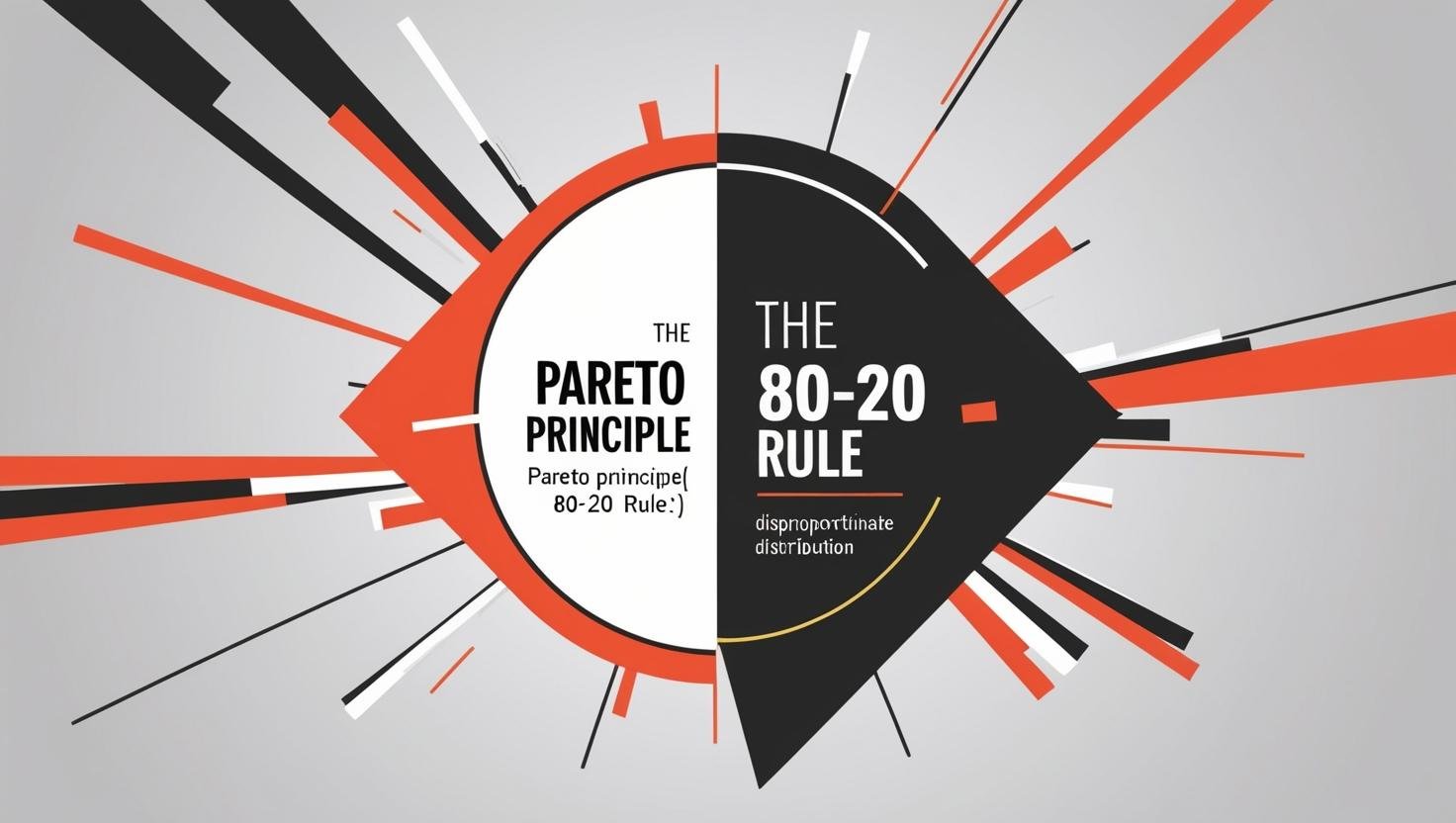At its core, the 80/20 Rule states that roughly 80% of effects come from 20% of causes. It's not a strict mathematical law, but rather an empirical observation that highlights an inherent imbalance in most systems. This principle suggests that a disproportionately small number of inputs, efforts, or causes are responsible for the majority of the outputs, results, or consequences.
While the numbers 80 and 20 are arbitrary and can vary (it might be 70/30, 90/10, etc.), the essence remains: a vital few contribute to the trivial many.

The principle was first observed in 1896 by Italian economist Vilfredo Pareto. He noticed that 80% of the land in Italy was owned by 20% of the population. Curiously, he also observed a similar 80/20 distribution in his garden: 20% of his pea pods produced 80% of the peas!
While Pareto's initial observations were in economics and agriculture, it was later popularized by management consultant Joseph M. Juran, who applied it to quality control and management, terming it the "Pareto Principle."
Once you're aware of it, you'll start seeing the Pareto Principle everywhere:
Business: 80% of your sales often come from 20% of your customers. 80% of customer complaints originate from 20% of your products or services.
Work/Productivity: 80% of your productive output comes from 20% of your efforts or tasks. 80% of interruptions come from 20% of sources.
Software: 80% of software bugs are found in 20% of the code. 80% of users utilize only 20% of a software's features.
Health & Fitness: 80% of your fitness results might come from 20% of your exercise regimen or dietary choices.
Wardrobe: You likely wear 20% of your clothes 80% of the time.
Applying the 80/20 Rule: The Power of Focus
The true value of the 80/20 Rule lies in its application. It's not just about understanding imbalance, but leveraging it to our advantage. Here's how you can apply it:
Identify the "Vital Few": Look at your tasks, customers, problems, or investments. Which 20% are generating 80% of your desired results or causing 80% of your headaches? This requires analysis and often a shift in perspective.
Prioritize Ruthlessly: Once you've identified the vital few, dedicate the majority of your time, energy, and resources to them. Stop trying to do everything; focus on what truly moves the needle.
Eliminate or Delegate the "Trivial Many": The other 80% of activities or causes, while seemingly numerous, often contribute very little. Consider whether these can be eliminated, automated, delegated, or significantly reduced.
Optimize High-Impact Activities: For the 20% that matter, think about how you can do them even better. Can you refine your process, invest more in those key areas, or deepen those critical relationships?
Problem Solving: When facing a problem, instead of trying to fix every symptom, identify the 20% of root causes that are responsible for 80% of the negative outcomes. Addressing these core issues will yield the most significant improvements.
Challenges and Caveats
While powerful, the 80/20 Rule isn't a silver bullet:
Not a Hard Rule: Remember, the 80/20 split is an approximation, not a precise formula. Don't get hung up on the exact numbers.
Requires Analysis: Identifying the vital few often requires data collection, observation, and critical thinking. It's not always immediately obvious.
Avoid Neglecting the "80%": While focusing on the vital few, it doesn't mean completely ignoring the other 80%. Some of the "trivial many" might still be necessary or contribute marginally. The goal is optimized allocation, not total abandonment.



